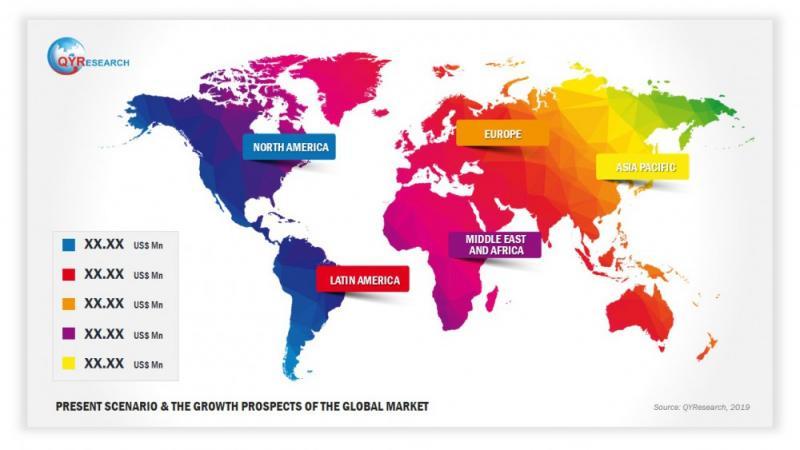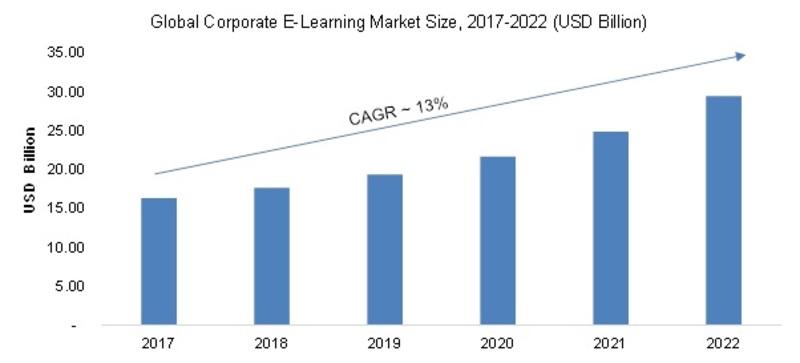Press release
Thin Film Coating Market on Track for Strong Growth, Expected to Hit US$ 52.0 Billion by 2032
The thin film coating market is a rapidly expanding sector within the global coatings industry, with wide-ranging applications across electronics, automotive, energy, aerospace, healthcare, and several other industries. Thin film coatings refer to extremely thin layers of material deposited onto substrates to improve the functionality, durability, and aesthetic appeal of products. These coatings can range from a few nanometers to several microns in thickness and offer enhanced properties such as corrosion resistance, optical clarity, and electrical conductivity.
The Thin Film Coating Market was valued at USD 32.12 billion in 2022 and is projected to expand from USD 33.7 billion in 2023 to USD 52.0 billion by 2032. The market is expected to grow at a compound annual growth rate (CAGR) of approximately 4.93% from 2024 to 2032.
𝐆𝐞𝐭 𝐚 𝐅𝐫𝐞𝐞 𝐒𝐚𝐦𝐩𝐥𝐞 𝐨𝐟 𝐭𝐡𝐢𝐬 𝐑𝐞𝐩𝐨𝐫𝐭: https://www.marketresearchfuture.com/sample_request/23741
Market Overview
The global thin film coating market has witnessed significant growth over the last few years, driven by technological advancements, increased demand for high-performance materials, and a growing emphasis on energy efficiency. Thin film coatings are increasingly being used in a variety of applications, including solar cells, semiconductors, flat-panel displays, automotive parts, and medical devices. The rise in industrial automation, the shift toward clean and renewable energy solutions, and the expansion of the electronics industry are among the key factors fueling the market's growth.
The thin film coating market is categorized based on technology, material type, application, and geography. The primary deposition techniques used for thin film coatings include physical vapor deposition (PVD), chemical vapor deposition (CVD), sputtering, electron beam deposition, and atomic layer deposition (ALD). Each method offers specific advantages depending on the desired properties of the coating and the intended application.
Key Market Drivers
1. Growing Demand for Energy-Efficient Solutions
The increasing focus on reducing energy consumption and enhancing the performance of renewable energy systems has significantly contributed to the demand for thin film coatings. For example, solar energy relies heavily on thin film technologies. Thin film solar panels are more flexible, lightweight, and cost-effective compared to traditional silicon-based solar panels, which makes them ideal for a wide range of applications, from residential rooftops to large-scale solar farms. The continuous development of high-efficiency thin film solar cells has further boosted the adoption of these materials in the renewable energy sector.
2. Technological Advancements in Electronics
Thin film coatings have become indispensable in the electronics industry due to their ability to improve the performance and reliability of devices. In particular, OLED (organic light-emitting diode) displays, used in smartphones, televisions, and other consumer electronics, depend on thin films to deliver high-quality, energy-efficient visuals. Additionally, semiconductors used in microchips and integrated circuits rely on thin films for insulation, conductivity, and protection against environmental damage. As the demand for smaller, faster, and more efficient electronic devices grows, the need for advanced thin film coatings continues to rise.
3. Automotive Sector Expansion
The automotive industry has increasingly embraced thin film coatings to improve the durability, aesthetics, and performance of vehicles. Thin film coatings are applied to windshields, headlamps, and exterior body panels to enhance their scratch resistance, corrosion resistance, and aesthetic appeal. Furthermore, thin films are also used in lightweight automotive materials to improve fuel efficiency and reduce emissions. The growing trend toward electric vehicles (EVs) and autonomous driving technologies is expected to further propel the demand for thin film coatings in the automotive sector.
𝐁𝐔𝐘 𝐍𝐎𝐖: https://www.marketresearchfuture.com/checkout?currency=one_user-USD&report_id=23741
Market Challenges
Despite its rapid growth, the thin film coating market faces several challenges that may hinder its expansion. One of the major obstacles is the high cost of production associated with certain deposition techniques, such as atomic layer deposition (ALD), which requires specialized equipment and processes. This can make the adoption of thin film coatings prohibitive for some industries, particularly small and medium-sized enterprises (SMEs) with limited budgets.
Another challenge is the complexity of the deposition process, which requires precise control of temperature, pressure, and material composition to achieve the desired coating properties. Even slight variations in these parameters can lead to inconsistencies in the final product, affecting performance and quality. This complexity may limit the scalability of thin film coating applications in some industries.
Application Areas
1. Solar Energy
Thin film coatings are widely used in the solar energy sector, especially for thin-film photovoltaic (PV) cells. The flexibility, low weight, and cost-effectiveness of thin film technology make it an attractive alternative to conventional silicon-based solar cells. Key materials used in thin film solar cells include cadmium telluride (CdTe), copper indium gallium selenide (CIGS), and amorphous silicon.
2. Optical Coatings
Thin films are crucial in the optics and photonics industry, where they are applied to lenses, mirrors, and other optical components to enhance performance. These coatings can be designed to alter the reflection, transmission, and absorption properties of light. Optical thin films are used in applications such as antireflective coatings for eyewear, laser systems, sensors, and solar panels.
3. Semiconductors
In the semiconductor industry, thin films are applied to substrates to create integrated circuits and microchips. These coatings play a vital role in insulating materials, conductive layers, and protective coatings for semiconductor devices. The demand for thin films in semiconductors is driven by the need for high-performance devices in consumer electronics, telecommunications, and computing.
4. Aerospace and Defense
In the aerospace and defense sectors, thin films are used to enhance the durability and performance of components such as turbine blades, missile components, and aircraft parts. The coatings improve corrosion resistance, thermal stability, and wear resistance, all critical properties for applications in extreme environments. Thin film coatings are also employed in optical instruments, such as lenses and sensors, used in space exploration and defense.
𝐕𝐢𝐞𝐰 𝐅𝐮𝐥𝐥 𝐑𝐞𝐩𝐨𝐫𝐭 𝐃𝐞𝐭𝐚𝐢𝐥𝐬: https://www.marketresearchfuture.com/reports/thin-film-coating-market-23741
Key Companies in the Thin Film Coating Market Include:
Unaxis Balzers
CemeCon AG
Canon Anelva Corporation
EV Group
IHI Ionbond AG
Veeco Instruments
Cambridge Vacuum Engineering
AJA International
Leybold Optics
Sulzer Metco
Oerlikon Balzers
Applied Materials
Platit AG
Denton Vacuum LLC
Ionbond
Regional Insights
The North American region is currently the largest market for thin film coatings, driven by the increasing demand from the aerospace, automotive, and electronics sectors. The region's emphasis on clean energy solutions, such as solar power, also plays a key role in the market's expansion.
The Asia-Pacific region, particularly China and India, is expected to witness the highest growth in the coming years. The rapid industrialization, along with increasing investments in renewable energy and electronics manufacturing, is fueling the demand for thin film coatings in this region.
Conclusion
The thin film coating market is poised for substantial growth, driven by technological innovations, rising demand for energy-efficient solutions, and expanding applications in a variety of industries. While challenges such as production costs and process complexities persist, the continuous advancements in coating technologies and deposition techniques promise to overcome these obstacles. As industries strive for higher performance and sustainability, the demand for thin film coatings will continue to play a crucial role in shaping the future of several key sectors, from renewable energy to electronics and automotive manufacturing.
𝐁𝐫𝐨𝐰𝐬𝐞 𝐌𝐨𝐫𝐞 𝐑𝐞𝐥𝐚𝐭𝐞𝐝 𝐑𝐞𝐩𝐨𝐫𝐭𝐬:
Wood Fiber Insulation Market https://www.marketresearchfuture.com/reports/wood-fiber-insulation-market-24951
2K Protective Coating Market https://www.marketresearchfuture.com/reports/2k-protective-coating-market-24900
Acetate Tow Market https://www.marketresearchfuture.com/reports/acetate-tow-market-25130
Active Cosmetic Ingredients Market https://www.marketresearchfuture.com/reports/active-cosmetic-ingredients-market-25006
Aerosol Propellant Market https://www.marketresearchfuture.com/reports/aerosol-propellant-market-9358
Alkyl Polyglycoside Market https://www.marketresearchfuture.com/reports/alkyl-polyglycoside-market-24882
Aluminum Rolled Product Market https://www.marketresearchfuture.com/reports/aluminum-rolled-product-market-25063
Contact:
Market Research Future®
99 Hudson Street,5Th Floor
New York, New York 10013
United States of America
Phone:
+1 628 258 0071(US)
+44 2035 002 764(UK)
Email: sales@marketresearchfuture.com
Website: https://www.marketresearchfuture.com
About Market Research Future:
At Market Research Future (MRFR), we enable our customers to unravel the complexity of various industries through our Cooked Research Report (CRR), Half-Cooked Research Reports (HCRR), Raw Research Reports (3R), Continuous-Feed Research (CFR), and Market Research Consulting Services. MRFR team have supreme objective to provide the optimum quality market research and intelligence services to our clients. Our market research studies by Components, Application, Logistics and market players for global, regional, and country level market segments, enable our clients to see more, know more, and do more, which help to answer all their most important questions.
The Thin Film Coating Market was valued at USD 32.12 billion in 2022 and is projected to expand from USD 33.7 billion in 2023 to USD 52.0 billion by 2032. The market is expected to grow at a compound annual growth rate (CAGR) of approximately 4.93% from 2024 to 2032.
𝐆𝐞𝐭 𝐚 𝐅𝐫𝐞𝐞 𝐒𝐚𝐦𝐩𝐥𝐞 𝐨𝐟 𝐭𝐡𝐢𝐬 𝐑𝐞𝐩𝐨𝐫𝐭: https://www.marketresearchfuture.com/sample_request/23741
Market Overview
The global thin film coating market has witnessed significant growth over the last few years, driven by technological advancements, increased demand for high-performance materials, and a growing emphasis on energy efficiency. Thin film coatings are increasingly being used in a variety of applications, including solar cells, semiconductors, flat-panel displays, automotive parts, and medical devices. The rise in industrial automation, the shift toward clean and renewable energy solutions, and the expansion of the electronics industry are among the key factors fueling the market's growth.
The thin film coating market is categorized based on technology, material type, application, and geography. The primary deposition techniques used for thin film coatings include physical vapor deposition (PVD), chemical vapor deposition (CVD), sputtering, electron beam deposition, and atomic layer deposition (ALD). Each method offers specific advantages depending on the desired properties of the coating and the intended application.
Key Market Drivers
1. Growing Demand for Energy-Efficient Solutions
The increasing focus on reducing energy consumption and enhancing the performance of renewable energy systems has significantly contributed to the demand for thin film coatings. For example, solar energy relies heavily on thin film technologies. Thin film solar panels are more flexible, lightweight, and cost-effective compared to traditional silicon-based solar panels, which makes them ideal for a wide range of applications, from residential rooftops to large-scale solar farms. The continuous development of high-efficiency thin film solar cells has further boosted the adoption of these materials in the renewable energy sector.
2. Technological Advancements in Electronics
Thin film coatings have become indispensable in the electronics industry due to their ability to improve the performance and reliability of devices. In particular, OLED (organic light-emitting diode) displays, used in smartphones, televisions, and other consumer electronics, depend on thin films to deliver high-quality, energy-efficient visuals. Additionally, semiconductors used in microchips and integrated circuits rely on thin films for insulation, conductivity, and protection against environmental damage. As the demand for smaller, faster, and more efficient electronic devices grows, the need for advanced thin film coatings continues to rise.
3. Automotive Sector Expansion
The automotive industry has increasingly embraced thin film coatings to improve the durability, aesthetics, and performance of vehicles. Thin film coatings are applied to windshields, headlamps, and exterior body panels to enhance their scratch resistance, corrosion resistance, and aesthetic appeal. Furthermore, thin films are also used in lightweight automotive materials to improve fuel efficiency and reduce emissions. The growing trend toward electric vehicles (EVs) and autonomous driving technologies is expected to further propel the demand for thin film coatings in the automotive sector.
𝐁𝐔𝐘 𝐍𝐎𝐖: https://www.marketresearchfuture.com/checkout?currency=one_user-USD&report_id=23741
Market Challenges
Despite its rapid growth, the thin film coating market faces several challenges that may hinder its expansion. One of the major obstacles is the high cost of production associated with certain deposition techniques, such as atomic layer deposition (ALD), which requires specialized equipment and processes. This can make the adoption of thin film coatings prohibitive for some industries, particularly small and medium-sized enterprises (SMEs) with limited budgets.
Another challenge is the complexity of the deposition process, which requires precise control of temperature, pressure, and material composition to achieve the desired coating properties. Even slight variations in these parameters can lead to inconsistencies in the final product, affecting performance and quality. This complexity may limit the scalability of thin film coating applications in some industries.
Application Areas
1. Solar Energy
Thin film coatings are widely used in the solar energy sector, especially for thin-film photovoltaic (PV) cells. The flexibility, low weight, and cost-effectiveness of thin film technology make it an attractive alternative to conventional silicon-based solar cells. Key materials used in thin film solar cells include cadmium telluride (CdTe), copper indium gallium selenide (CIGS), and amorphous silicon.
2. Optical Coatings
Thin films are crucial in the optics and photonics industry, where they are applied to lenses, mirrors, and other optical components to enhance performance. These coatings can be designed to alter the reflection, transmission, and absorption properties of light. Optical thin films are used in applications such as antireflective coatings for eyewear, laser systems, sensors, and solar panels.
3. Semiconductors
In the semiconductor industry, thin films are applied to substrates to create integrated circuits and microchips. These coatings play a vital role in insulating materials, conductive layers, and protective coatings for semiconductor devices. The demand for thin films in semiconductors is driven by the need for high-performance devices in consumer electronics, telecommunications, and computing.
4. Aerospace and Defense
In the aerospace and defense sectors, thin films are used to enhance the durability and performance of components such as turbine blades, missile components, and aircraft parts. The coatings improve corrosion resistance, thermal stability, and wear resistance, all critical properties for applications in extreme environments. Thin film coatings are also employed in optical instruments, such as lenses and sensors, used in space exploration and defense.
𝐕𝐢𝐞𝐰 𝐅𝐮𝐥𝐥 𝐑𝐞𝐩𝐨𝐫𝐭 𝐃𝐞𝐭𝐚𝐢𝐥𝐬: https://www.marketresearchfuture.com/reports/thin-film-coating-market-23741
Key Companies in the Thin Film Coating Market Include:
Unaxis Balzers
CemeCon AG
Canon Anelva Corporation
EV Group
IHI Ionbond AG
Veeco Instruments
Cambridge Vacuum Engineering
AJA International
Leybold Optics
Sulzer Metco
Oerlikon Balzers
Applied Materials
Platit AG
Denton Vacuum LLC
Ionbond
Regional Insights
The North American region is currently the largest market for thin film coatings, driven by the increasing demand from the aerospace, automotive, and electronics sectors. The region's emphasis on clean energy solutions, such as solar power, also plays a key role in the market's expansion.
The Asia-Pacific region, particularly China and India, is expected to witness the highest growth in the coming years. The rapid industrialization, along with increasing investments in renewable energy and electronics manufacturing, is fueling the demand for thin film coatings in this region.
Conclusion
The thin film coating market is poised for substantial growth, driven by technological innovations, rising demand for energy-efficient solutions, and expanding applications in a variety of industries. While challenges such as production costs and process complexities persist, the continuous advancements in coating technologies and deposition techniques promise to overcome these obstacles. As industries strive for higher performance and sustainability, the demand for thin film coatings will continue to play a crucial role in shaping the future of several key sectors, from renewable energy to electronics and automotive manufacturing.
𝐁𝐫𝐨𝐰𝐬𝐞 𝐌𝐨𝐫𝐞 𝐑𝐞𝐥𝐚𝐭𝐞𝐝 𝐑𝐞𝐩𝐨𝐫𝐭𝐬:
Wood Fiber Insulation Market https://www.marketresearchfuture.com/reports/wood-fiber-insulation-market-24951
2K Protective Coating Market https://www.marketresearchfuture.com/reports/2k-protective-coating-market-24900
Acetate Tow Market https://www.marketresearchfuture.com/reports/acetate-tow-market-25130
Active Cosmetic Ingredients Market https://www.marketresearchfuture.com/reports/active-cosmetic-ingredients-market-25006
Aerosol Propellant Market https://www.marketresearchfuture.com/reports/aerosol-propellant-market-9358
Alkyl Polyglycoside Market https://www.marketresearchfuture.com/reports/alkyl-polyglycoside-market-24882
Aluminum Rolled Product Market https://www.marketresearchfuture.com/reports/aluminum-rolled-product-market-25063
Contact:
Market Research Future®
99 Hudson Street,5Th Floor
New York, New York 10013
United States of America
Phone:
+1 628 258 0071(US)
+44 2035 002 764(UK)
Email: sales@marketresearchfuture.com
Website: https://www.marketresearchfuture.com
About Market Research Future:
At Market Research Future (MRFR), we enable our customers to unravel the complexity of various industries through our Cooked Research Report (CRR), Half-Cooked Research Reports (HCRR), Raw Research Reports (3R), Continuous-Feed Research (CFR), and Market Research Consulting Services. MRFR team have supreme objective to provide the optimum quality market research and intelligence services to our clients. Our market research studies by Components, Application, Logistics and market players for global, regional, and country level market segments, enable our clients to see more, know more, and do more, which help to answer all their most important questions.
Permanent link to this press release:
Copy
Please set a link in the press area of your homepage
to this press release on woodPRI. woodPRI disclaims liability for any content contained in
this release.
Recommend

/newsMicroencapsulation Market Deep Analysis on Key Players - Dow Corning, Encapsys, Syngenta Crop Protection, Evonik Industries, 3M and Bayer
Market Study Report Adds Global Microencapsulation Market Size, Status and Forecast 2024 added to its database. The report provides key statistics on the current state of the industry and other analytical data to understand the market.
Extensive research is required for choosing the appropriate cor...

/newsGermany Airbag Market Size 2023: Global Share, Industry And Report Analysis By 2030 | Hyundai Mobis Co., Ltd. Key Safety Systems, Inc. Robert Bosch GmbH
Germany airbag market is expected to grow at a CAGR of around 6% during the forecast period. Germany Airbag Market research report refers to gathering and analyzing significant market data serve as best medium for various industry players to launch novel product or service. It is vital for key firms...

/newsSecurities Brokerages And Stock Exchanges Market Outlook 2021: Big Things are Happening
A new intelligence report released by HTF MI with title "Global Securities Brokerages And Stock Exchanges Market Survey & Outlook" is designed covering micro level of analysis by Insurers and key business segments, offerings and sales channels. The Global Securities Brokerages And Stock Exchange...

/newsRenewable Chemicals Market Emerging Trends and Competitive Landscape Forecast to 2028
The renewable chemicals market was valued at US$ 80,566.30 million in 2021 and is projected to reach US$ 1,76,750.76 million by 2028 it is expected to grow at a CAGR of 11.9% from 2021 to 2028. The research report focuses on the current market trends, opportunities, future potential of the market, a...

/newsHow Coronavirus is Impacting Cold Brew Coffee, Global Market Volume Analysis, Size, Share and Key Trends 2020-2026
"Market Latest Research Report 2020:
Los Angles United States, February 2020: The Cold Brew Coffee market has been garnering remarkable momentum in the recent years. The steadily escalating demand due to improving purchasing power is projected to bode well for the global market. QY Research's lates...

/newsCorporate E-Learning Market - Global Industry Size, Share, Key Players Analysis that are Infor, SkillSoft Corporation, Adrenna, CERTPOINT Systems and others with Regional Forecast to 2022
Overview:
E-Learning is used to enhance the learning procedures for newer job requirements and to make employees sound about the internal and external changes in the market and respective organizations. This method has created considerable differences in the ways of training and developing employee...
